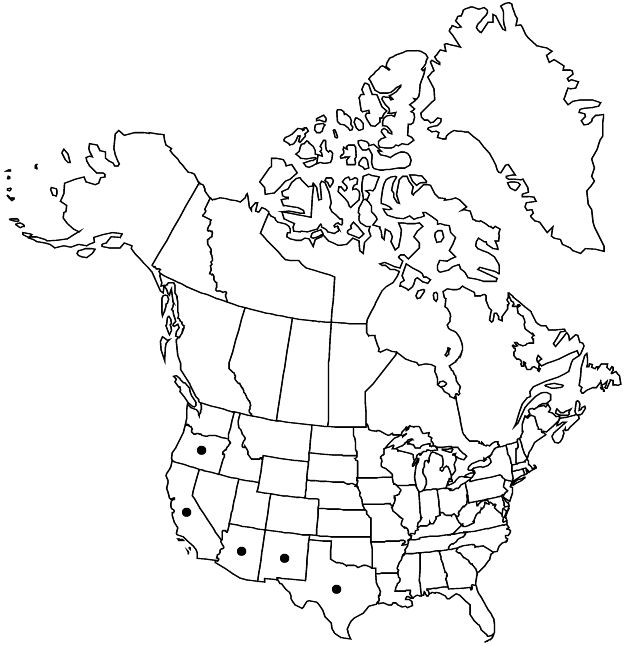Difference between revisions of "Phoradendron bolleanum"
in C. F. P. von Martius et al., Fl. Bras. 5(2): 134m. 1868.
FNA>Volume Importer |
imported>Volume Importer |
||
| (One intermediate revision by the same user not shown) | |||
| Line 1: | Line 1: | ||
{{Treatment/ID | {{Treatment/ID | ||
|accepted_name=Phoradendron bolleanum | |accepted_name=Phoradendron bolleanum | ||
| − | |accepted_authority=(Seemann) Eichler | + | |accepted_authority=(Seemann) Eichler |
|publications={{Treatment/Publication | |publications={{Treatment/Publication | ||
| − | |title=Fl. Bras. | + | |title=in C. F. P. von Martius et al., Fl. Bras. |
|place=5(2): 134m. 1868 | |place=5(2): 134m. 1868 | ||
|year=1868 | |year=1868 | ||
| Line 63: | Line 63: | ||
-->{{#Taxon: | -->{{#Taxon: | ||
name=Phoradendron bolleanum | name=Phoradendron bolleanum | ||
| − | |authority=(Seemann) Eichler | + | |authority=(Seemann) Eichler |
|rank=species | |rank=species | ||
|parent rank=genus | |parent rank=genus | ||
| Line 74: | Line 74: | ||
|distribution=Ariz.;Calif.;N.Mex.;Oreg.;Tex.;Mexico;Central America (Guatemala). | |distribution=Ariz.;Calif.;N.Mex.;Oreg.;Tex.;Mexico;Central America (Guatemala). | ||
|reference=None | |reference=None | ||
| − | |publication title=Fl. Bras. | + | |publication title=in C. F. P. von Martius et al., Fl. Bras. |
|publication year=1868 | |publication year=1868 | ||
|special status= | |special status= | ||
| − | |source xml=https:// | + | |source xml=https://bitbucket.org/aafc-mbb/fna-data-curation/src/2e0870ddd59836b60bcf96646a41e87ea5a5943a/coarse_grained_fna_xml/V12/V12_686.xml |
|genus=Phoradendron | |genus=Phoradendron | ||
|species=Phoradendron bolleanum | |species=Phoradendron bolleanum | ||
Latest revision as of 19:17, 5 November 2020
Subshrubs, erect, forming globose clumps to 10 dm diam., dioecious. Stems green, brown, reddish brown, or orange, glabrous or slightly puberulent, hairs simple; internodes terete, to 2 cm. Leaves green, well developed, glabrous or slightly puberulent, hairs simple; petiole very short or absent; blade terete to narrowly oblong or oblanceolate, 7–35 × 1–10 mm, thin, base slightly tapered, apex acute-apiculate to rounded; basal phyllotaxy transverse. Staminate inflorescences 3–6 mm, glabrous or slightly puberulent, hairs simple; peduncle with 1 internode, 1–2 mm; fertile internode usually 1, 6–20-flowered, triseriate, flowers 1–3 per column or not in columns. Pistillate inflorescences 3–6 mm, elongating in fruit, glabrous or slightly puberulent, hairs simple; peduncle with 1 internode, 1.5–3 mm; fertile internodes 1(–2), each 2-flowered, flowers 1 per bract. Flowers: petals 3–4, 1–2 mm. Berries white to pink, ovoid, 3.5–5 × 3.5–5 mm, glabrous. 2n = 28.
Phenology: Flowering May–Aug.
Habitat: Coniferous forests.
Elevation: 300–3000 m.
Distribution

Ariz., Calif., N.Mex., Oreg., Tex., Mexico, Central America (Guatemala).
Discussion
This treatment follows J. Kuijt (2003), who considered Phoradendron bolleanum to be a widespread and variable species complex. The three main taxa that often have been recognized as species are Phoradendron bolleanum in the narrow sense, P. densum, and P. pauciflorum,. Phoradendron bolleanum in the narrow sense has small, narrow leaves and frequently parasitizes Juniperus as well as Arbutus. The P. pauciflorum variant has broad leaves and mostly parasitizes Abies concolor. The P. densum variant tends to have leaves that are intermediate between those of the other two variants; it ranges from Oregon to Mexico and parasitizes Cupressus and Juniperus. Molecular analyses indicate that P. bolleanum is not monophyletic unless P. minutifolium Urban is synonymized with the other variants. Hybrids between P. bolleanum and P. juniperinum produce plants closely resembling P. minutifolium (D. Wiens and M. DeDecker 1972). As pointed out by Kuijt, molecular studies will be required to determine species boundaries within this complex.
Selected References
None.